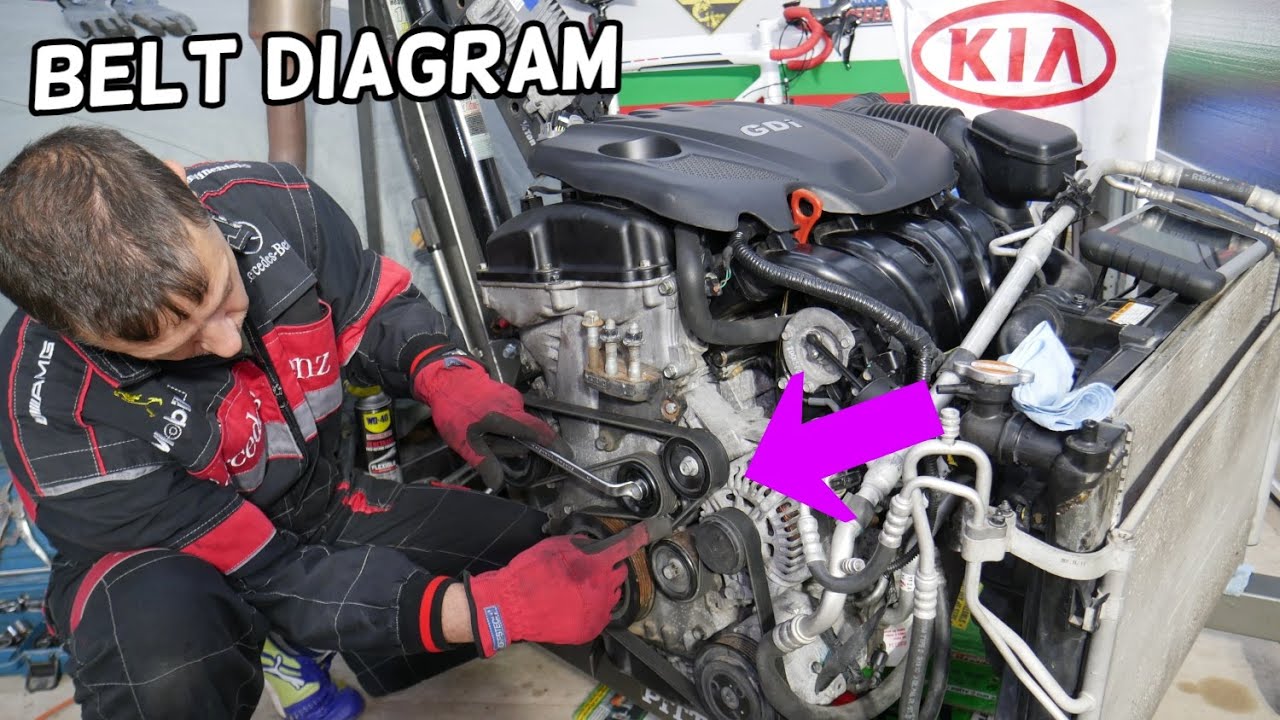Locating the serpentine belt diagram for your 2012 Kia Sorento is essential for correct replacement. Follow these steps:
Primary Location: Underhood Diagram
Check the Radiator Support or Core Support: Open the hood and carefully inspect the top of the radiator support panel (the metal frame directly behind the grille). Kia often places a large, clear decal here showing the belt routing path.
Check near the Hood Latch Mechanism: Look around the center area where the hood closes and latches onto the radiator support. Labels might be placed vertically nearby.

Check the Upper Radiator Shroud: Examine the top plastic cover over the radiator, as diagrams are sometimes affixed there.
Check Your Owner's Manual
Locate the Maintenance Section: Your vehicle's owner's manual typically has a section dedicated to engine maintenance. While a comprehensive diagram might not always be included, it often specifies the official Kia part number for the correct replacement belt. Search for "belt" or "serpentine belt" in the index.
Secondary Locations Underhood
- Fuse Box Cover: While less common for belt diagrams, it's worth quickly checking the cover of the main engine compartment fuse box.
- Firewall: Inspect the vertical firewall (the metal wall separating the engine bay from the passenger compartment), especially near the top.
- Near Specific Components: Look around the power steering pump bracket, AC compressor bracket, or alternator bracket, particularly on the side facing the front of the car.
Belt Routing Stamped on Components
Some brackets or tensioners may have the serpentine routing path physically stamped or cast into the metal. Trace the current belt carefully to compare against any markings you find.
Consult a Kia Dealer
Parts Department: Visit your local Kia dealership's parts department. Provide your Vehicle Identification Number (VIN). They can print or show you the official routing diagram and provide the correct belt part number.
Key Considerations
- Safety First: Ensure the engine is cool and the ignition is OFF before inspecting the engine bay. Keep clear of moving components.
- Engine Options: Verify your engine type (e.g., 2.4L GDI 4-cylinder or 3.5L V6) before purchasing a belt or confirming a diagram, as routing differs.
- VIN Specificity: Using your VIN provides the most accurate information for your specific vehicle configuration.

